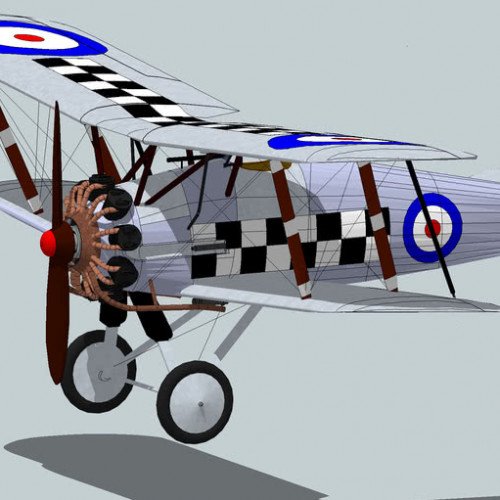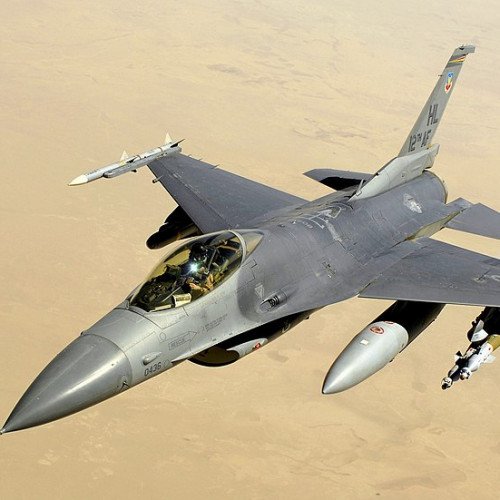Gloster Gamecock vs General Dynamics F-16 Fighting Falcon

Gloster Gamecock
The Gloster Gamecock was a biplane fighter of the Royal Air Force, a development of the Mk III Grebe, that first flew in February 1925. It differed from the Grebe primarily by way of its Bristol Jupiter engine, which replaced the unreliable Armstrong Siddeley Jaguar. Other changes included improved ailerons, refined fuselage contours, and internally mounted machine guns. The Gamecock Mark I entered service with No. 23 Squadron RAF at RAF Henlow in May 1926 and they were also the last of six squadrons to operate the fighter until July 1931. This was a fairly short RAF service life, partly because of its high accident rate – of the 90 operated by the RAF, 22 were lost in landing or spin accidents. These faults were remedied in the Mk. II version, utilizing a longer upper wing and a modified tail unit. During the Finnish Winter War 1939–40, a Gamecock was used to capture a Soviet Ilyushin DB-3 bomber. On 29 January 1940, the Finnish Gamecock strafed two Soviet DB-3s when they landed on Finnish soil (which they mistook for Estonia) to transfer fuel from one plane to the other. The strafed crews hurried into the one plane which had enough fuel remaining and escaped, leaving the DB-3 behind to be captured by the Finns.
Statistics for this Xoptio

General Dynamics F-16 Fighting Falcon
The General Dynamics F-16 Fighting Falcon is a single-engine supersonic multirole fighter aircraft originally developed by General Dynamics for the United States Air Force (USAF). Designed as an air superiority day fighter, it evolved into a successful all-weather multirole aircraft. Over 4,600 aircraft have been built since production was approved in 1976. Although no longer being purchased by the U.S. Air Force, improved versions are being built for export customers. In 1993, General Dynamics sold its aircraft manufacturing business to the Lockheed Corporation, which in turn became part of Lockheed Martin after a 1995 merger with Martin Marietta.The Fighting Falcon's key features include a frameless bubble canopy for better visibility, side-mounted control stick to ease control while maneuvering, an ejection seat reclined 30 degrees from vertical to reduce the effect of g-forces on the pilot, and the first use of a relaxed static stability/fly-by-wire flight control system that helps to make it an agile aircraft. The F-16 has an internal M61 Vulcan cannon and 11 locations for mounting weapons and other mission equipment. The F-16's official name is "Fighting Falcon", but "Viper" is commonly used by its pilots and crews, due to a perceived resemblance to a viper snake as well as the Colonial Viper starfighter on Battlestar Galactica which aired at the time the F-16 entered service.In addition to active duty in the U.S. Air Force, Air Force Reserve Command, and Air National Guard units, the aircraft is also used by the U.S. Air Force Thunderbirds aerial demonstration team, and as an adversary/aggressor aircraft by the United States Navy. The F-16 has also been procured to serve in the air forces of 25 other nations. As of 2015, it is the world's most numerous fixed-wing aircraft in military service.